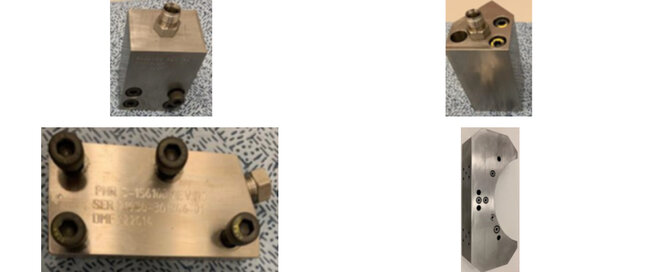
Subsea Control Module Manifolds
Reliability Improvement and Topology Optimization
The Subsea Control Module (SCM) Manifold acts as a central hub for controlling and monitoring the flow of hydrocarbons from the wellhead to the surface. It is the collection point and control center for the subsea tree.
Existing Design
The SCM manifold, acting as the interface for the control system and the subsea tree, is currently manufactured using traditional machining methods of machining and boring. In order to connect internal flow passages, the external faces of the manifold must be drilled through, and then plugged using traditional Lee plugs to seal the passageway.
There are several documented cases of Lee plugs failing after parts are commissioned over time. A failure of a Lee plug results in a control channel breach and loss of control. This annual rate of failure results in an impact between $200k - $500k per day to the end user.
When the SCM Manifolds leak, the control module must be retrieved from the sea floor and returned to a maintenance center for lengthy repair times before re-installation can occur.
Validated Technology
Additive Manufacturing Engineering completely redesigned the SCM Manifold in an effort to improve the reliability and to optimize the manifolds for weight reduction. The manifold set are printed as individual components in one build plate using a single metal. The manifolds are printed with continuous flow passages using outer walls having the thickness required to achieve pressure requirements. Fluid flow channels are completely enclosed inside the part with no need for installing Lee plugs. Without having to install sealing Lee Plugs, all previous failure modes have been eliminated. Parts have been tested through several pressure cycles and temperature cycles to validate the integrity of the manifolds in accordance with required application aspects.
New revision of API-17D will prevent the use of Lee Plugs. These SCM Manifolds will be fully compliant with these requirements.
Challenges
- Design a module that could be a drop-in replacement.
- Print manifolds with flow channels having the mechanical integrity to perform in specified pressures.
- Maintain the performance of the SCM Manifolds with new design.
- The fluid channels must be void of any powder prior to heat treatment.
Results
- Successful design and retrofit of the parts have met all the functional requirements of the previous SCM Manifolds.
- Successfully achieved a design where Lee plugs were removed, and part weight reduced by up to 90%.
- Reliability issues were completely addressed through the AM design.



